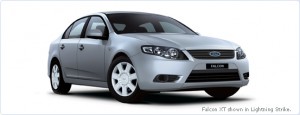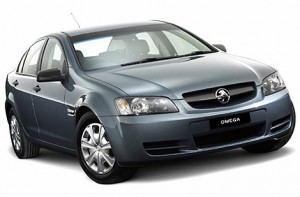The core design principle of kinetic design…
Back when the Holden VE Commodore was released, I was very disappointed that styling clearly dominated engineering in a way that I thought reflected the worst excesses of the past.
I wrote:
Quoted in Go-Auto E-News, designer Mike Simcoe had this to say about the exterior:
“It’s good, confident design. It’s well proportioned and it pushes quality to a level that we’ve never seen before. The interior package for VT was king of that in the market here – and this car continues that. The volume efficiency of the package – that’s the exterior volume to interior size – is just as aggressive as VT was. We made a big song and dance back then about that. And this car is the same.
“The track is a little bit wider with this new architecture, so from the ground up we’ve been able to put the wheels wider on the car.
“It’s an international design. You can’t say ‘European’ any more, because there’s no ‘European design’, or ‘Japanese design’ – it’s a truly international design in its form language. It’s genuinely a rear-wheel drive proportioned car which is something we hadn’t been able to push as hard in the past. And it’s much more formal. The form language that’s on the car is internal Holden. We’ve been trying to do something like this seriously for a long time.”
I mean, WTF does all that mean? Where are the important details on the body? What’s the coefficient of aerodynamic drag? What are the coefficients of front and rear lift? How has the exterior been optimised for frontal pedestrian impact safety? How do the shapes of the doors help in side impacts? Was the wider track (I assume that’s what “we’ve been able to put the wheels wider on the car” means) done only for appearance?! How can you apparently justify no improvement in interior packaging after nearly 10 years of automotive development?What came first – the exterior stylists’ wet dream or the functionality of the car?
And what if other industrial designers behaved like this?
“Here’s your new Nikon digital SLR, sir. Note how the lens mount combines with the form language of the body and how we’ve pushed the corners out in an aggressively positive volume efficiency design language to give formal non-Japanese proportions…”
You really have to wonder.
And now we have the Ford FG Falcon. The script is almost the same in its utter meaninglessness.
The all-new exterior and interior design of the FG Falcon embodies the vehicle’s core attributes of performance, comfort and fun-to-drive characteristics.
“We have wrapped this powerful, dynamic car in a design that visually delivers on the promise of what Falcon is,” said Ford Asia Pacific Design Director Scott Strong.
“Our research told us that our customers wanted more sporty characteristics and more luxury from their Falcon. It was therefore very important that the exterior and interior design of the vehicle matched and visually represented the performance, dynamics, comfort and safety advancements that were being made in other areas.”
 “ All the models in the new Falcon range share the same core design principles of kinetic design – embodying dynamic movement, even when the vehicle is standing still.”
“ All the models in the new Falcon range share the same core design principles of kinetic design – embodying dynamic movement, even when the vehicle is standing still.”
The clean surfacing conveys athletic, taut, responsive qualities that are in line with European design trends.
In order to do so, the exterior design team favoured an assertive on-road stance over aggressive styling.
“Stance – or how a vehicle looks on the road – is critical to the design of any new car,” said Ford Australia Design Manager Advanced Projects, Steve Park.
“We wanted to plant the new Falcon firmly on the road and embody the performance and dynamics that the car exhibits when moving. However, it was also important to achieve a balance between that desire and being overtly aggressive in the styling.
“We knew that once we delivered the right stance for the car that the rest of the design would flow naturally from that.”
In order to achieve the optimum stance, Park took advantage of changes to the Falcon’s proportions.
Increases in width to the front and rear tracks allowed the designers to move the wheel arches and place the wheels to the extreme outside of the vehicle, automatically giving the exterior a stronger stance.
Building on the contemporary interior architecture of the previous model, the FG Falcon revises the relationship between the car and its occupants while creating a dynamic and sophisticated appearance that reinforces the vehicles’ athletic and involving driving dynamics.
At least in another part of their press release, Ford does draw some connections between styling and a real world outcome – better ingress and egress from the cabin for example.
But as with the VE Commodore – what an absolute crock of subjective, partisan and irrelevant rubbish.

 Julian Edgar, 50, has been writing about car modification and automotive technology for nearly 25 years. He has owned cars with two, three, four, five, six and eight cylinders; single turbo, twin turbo, supercharged, diesel and hybrid electric drivelines. He lists his transport interests as turbocharging, aerodynamics, suspension design and human-powered vehicles.
Julian Edgar, 50, has been writing about car modification and automotive technology for nearly 25 years. He has owned cars with two, three, four, five, six and eight cylinders; single turbo, twin turbo, supercharged, diesel and hybrid electric drivelines. He lists his transport interests as turbocharging, aerodynamics, suspension design and human-powered vehicles.


on April 29th, 2008 at 5:49 pm
I just happened to watch an elderly gentleman struggle to climb out of the back seat of a BA-BF Falcon today before I read your article. He looked very undignified and was probably highly embarassed (it took him longer than the 15 seconds I was stopped at the traffic lights.) The better cabin ingress and egress is long overdue and should really be something one can take for granted given the Falcon’s wide-ranging passenger carrying role. It’s sad that one has to trumpet a “feature” like being able to get into and out of your car easily…
on April 30th, 2008 at 10:57 am
We are told every day that the way to a better future is for us all to be more educated, to have more expertise, to be more “professional”. But the problem with experts, all experts, is they are too focussed, too obsessed with their little area of expertise to the point where they think it is far far more important and valuable than it really is. That focus by definition prevents seeing the big picture. Being able to see the forest for the trees. The car industry suffers badly from that. Just like politicians think the answer to everything is more laws and police think the answer to everything is enforcement and teachers think the answer to everything is more education, in the car industry the car stylists think the answer to more sales is better styling and the safety engineers think the answer is more airbags and suspension engineers think its more sophisticated suspension, but there’s no-one to ask “is this the right car?”. Managing is seen as looking after the finances, when its not, that’s accounting. Managing is setting and imposing a vision on everyone rather than letting all the experts have their way and ending up with a product that that pleases most experts but few customers. And include in that category of “experts” specialists motoring journalists, who have gone down that wrong path too and gotten closer and closer to the experts in the industry and further away from the customers.
on February 8th, 2010 at 5:34 pm
So what is the drag co-efficients of the VE and FG. Holden and Ford seem to have gone quiet on this detail.